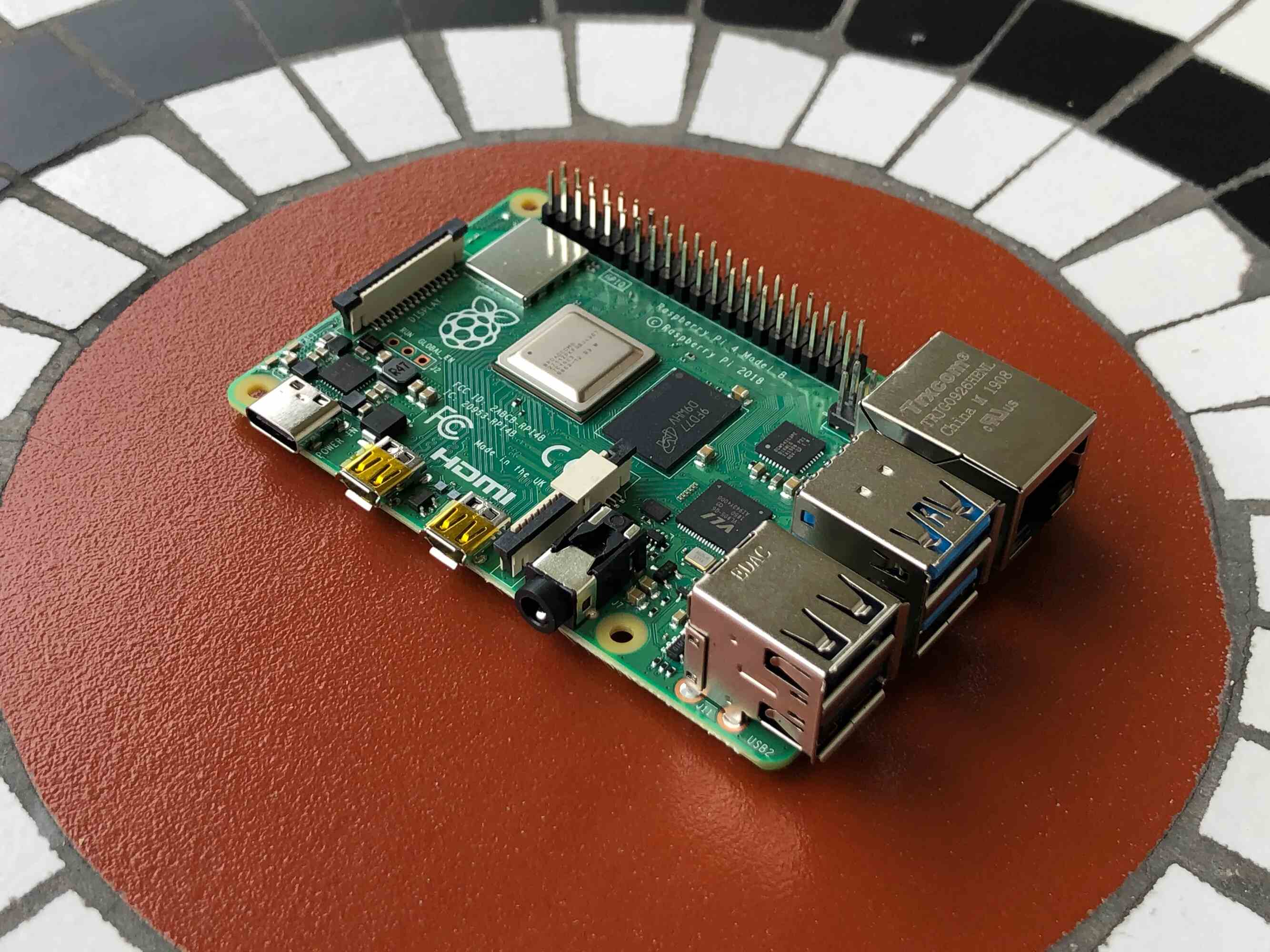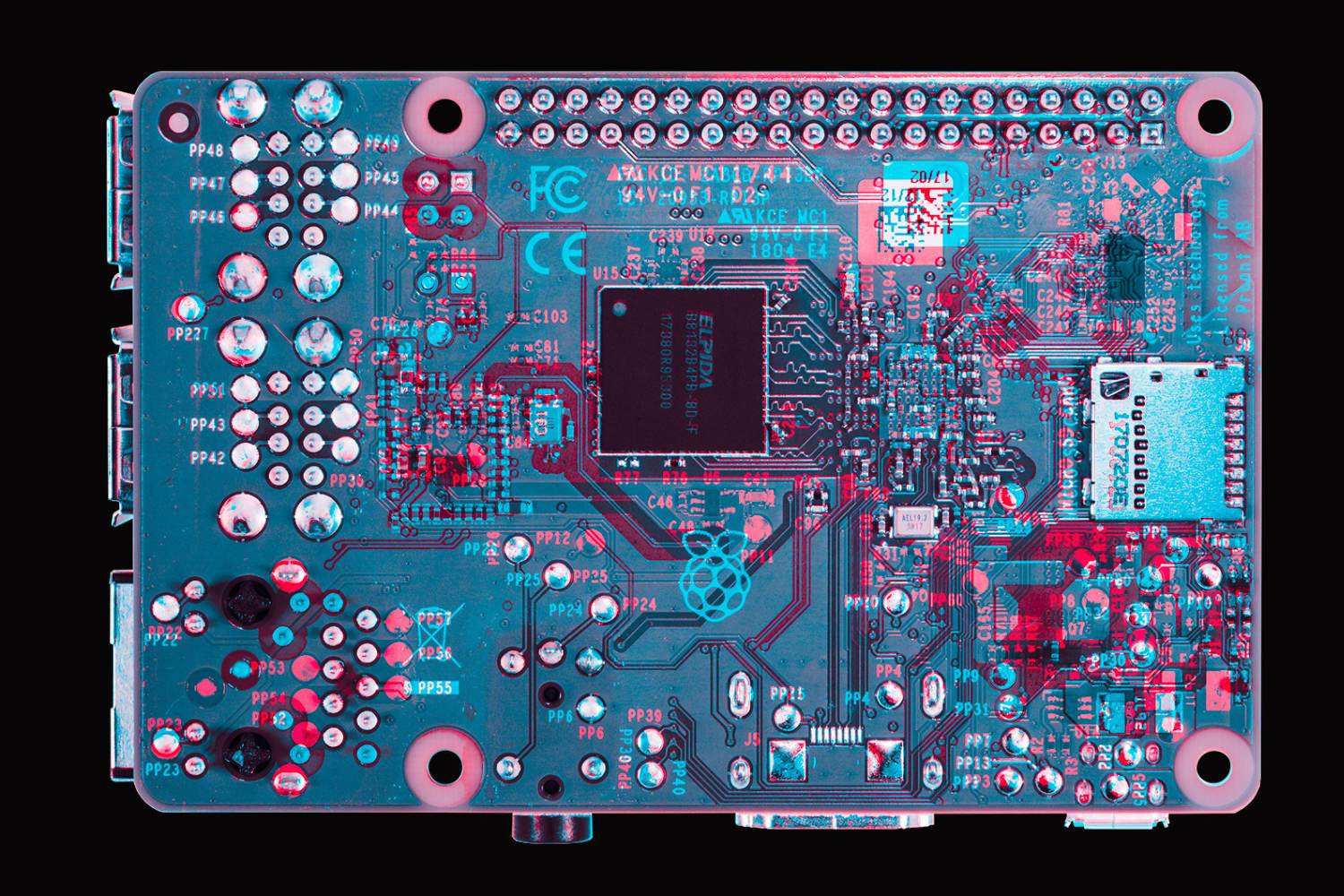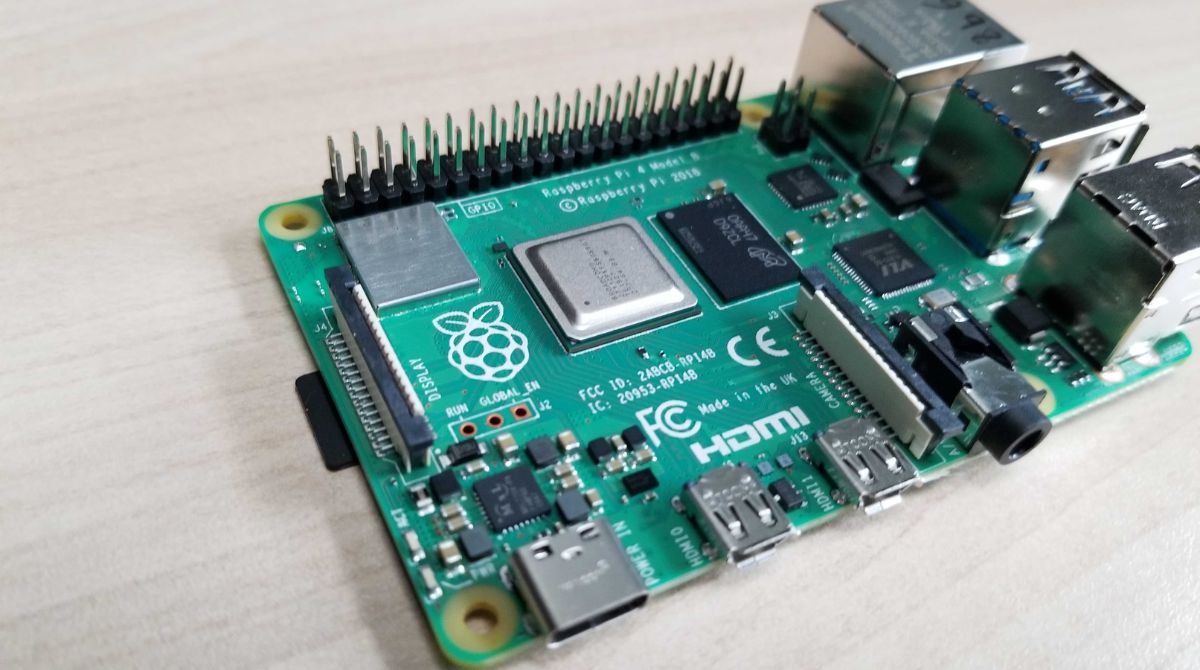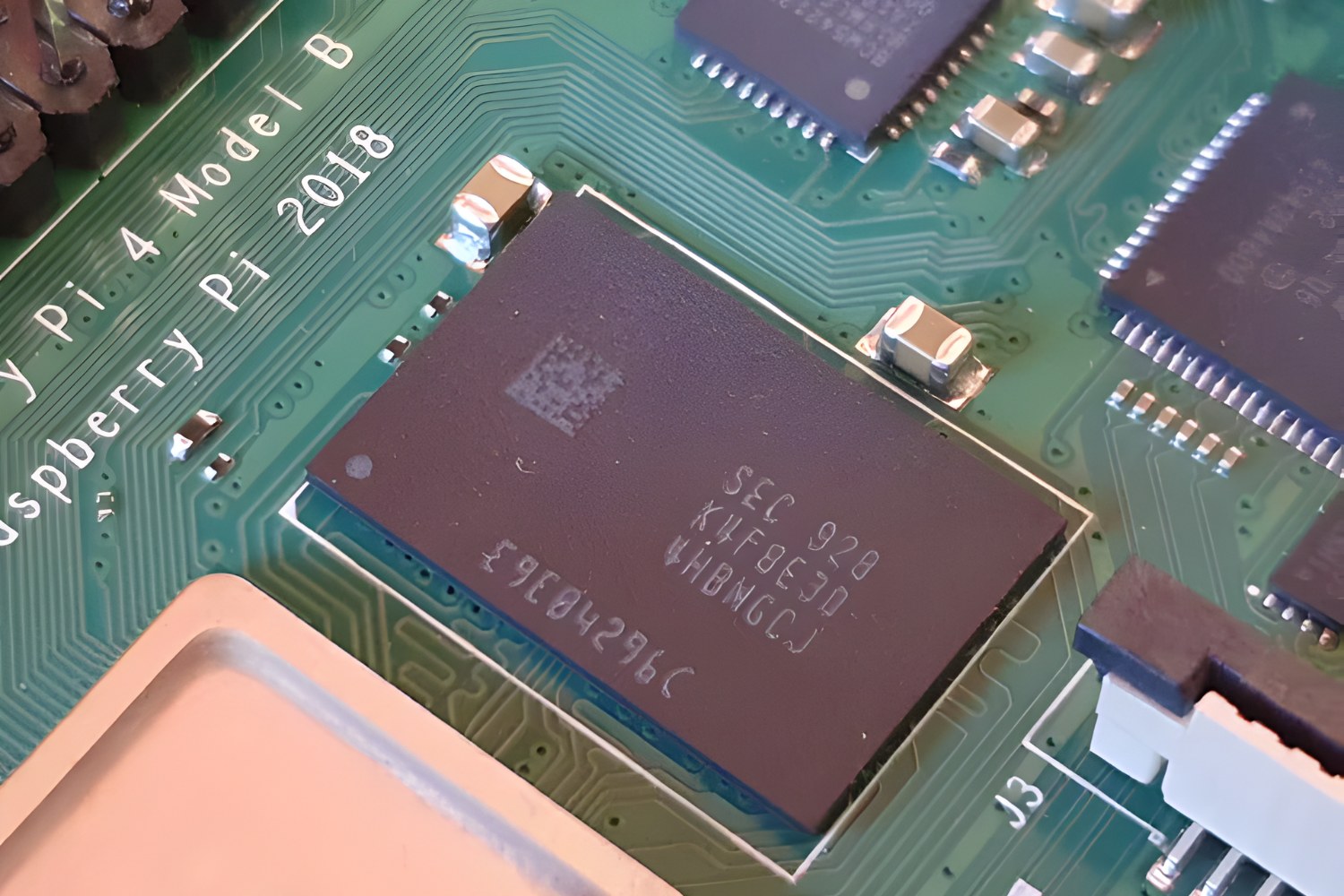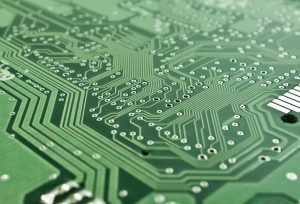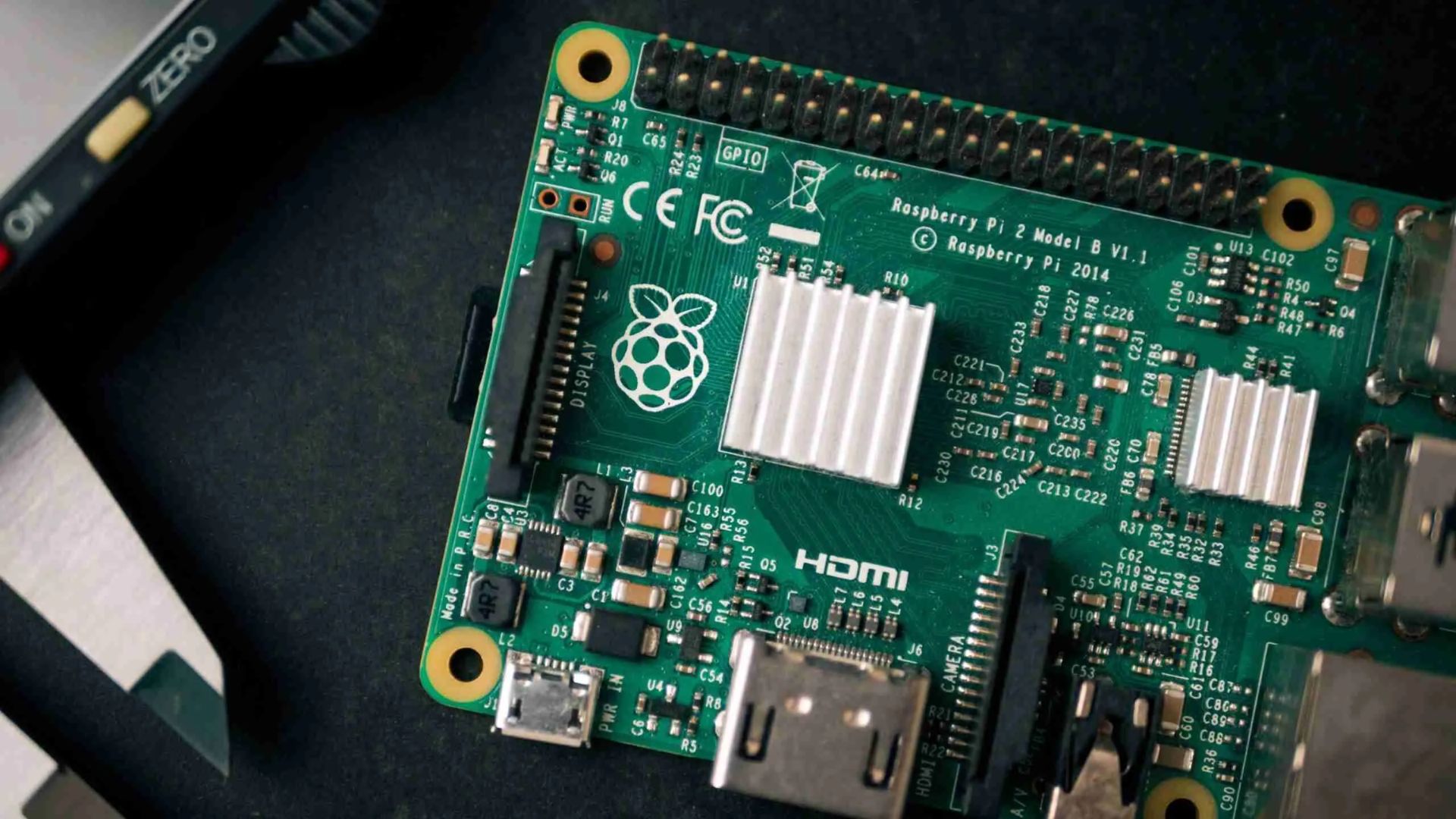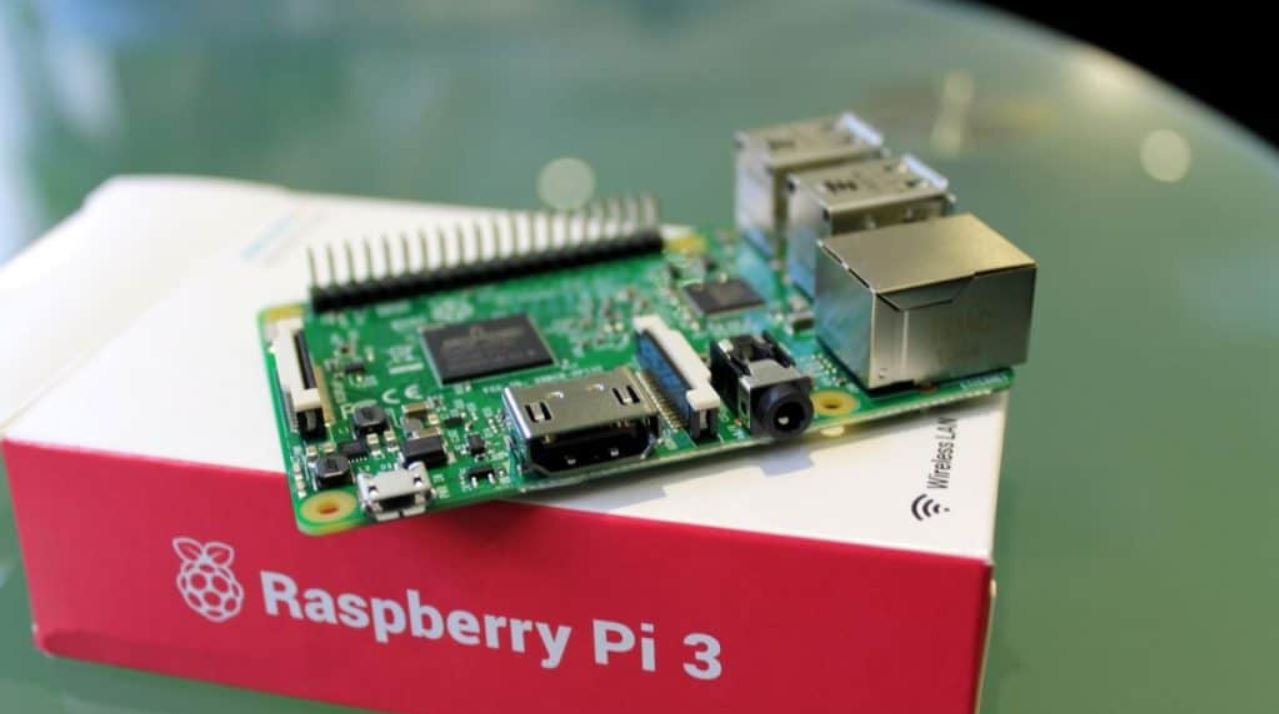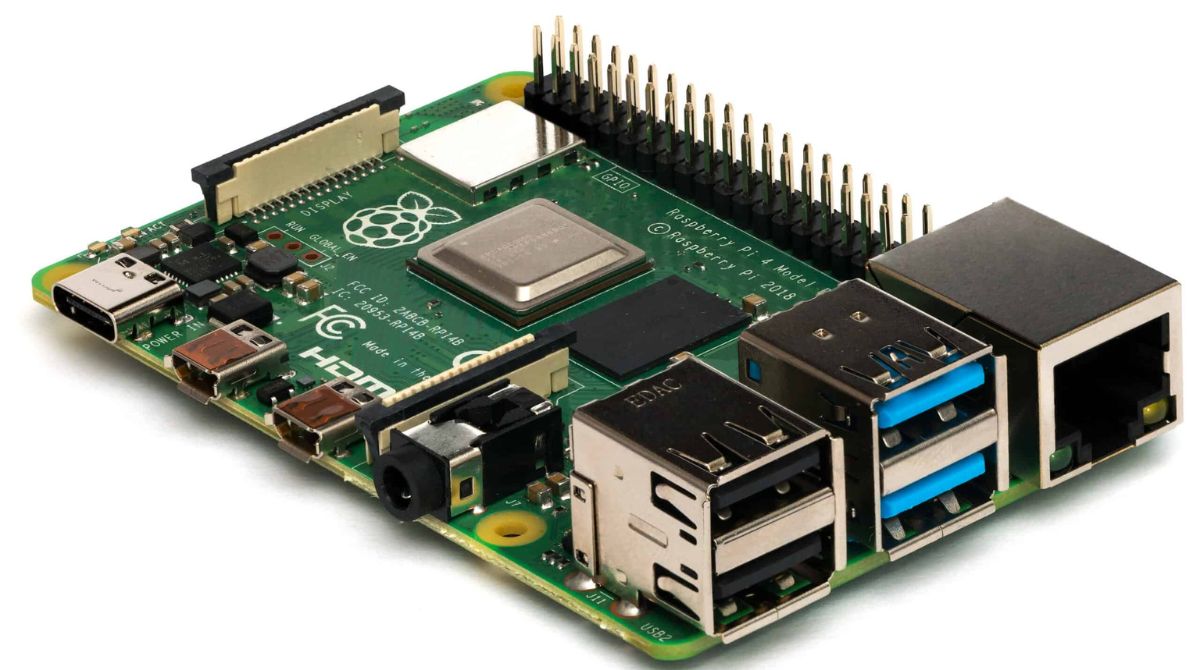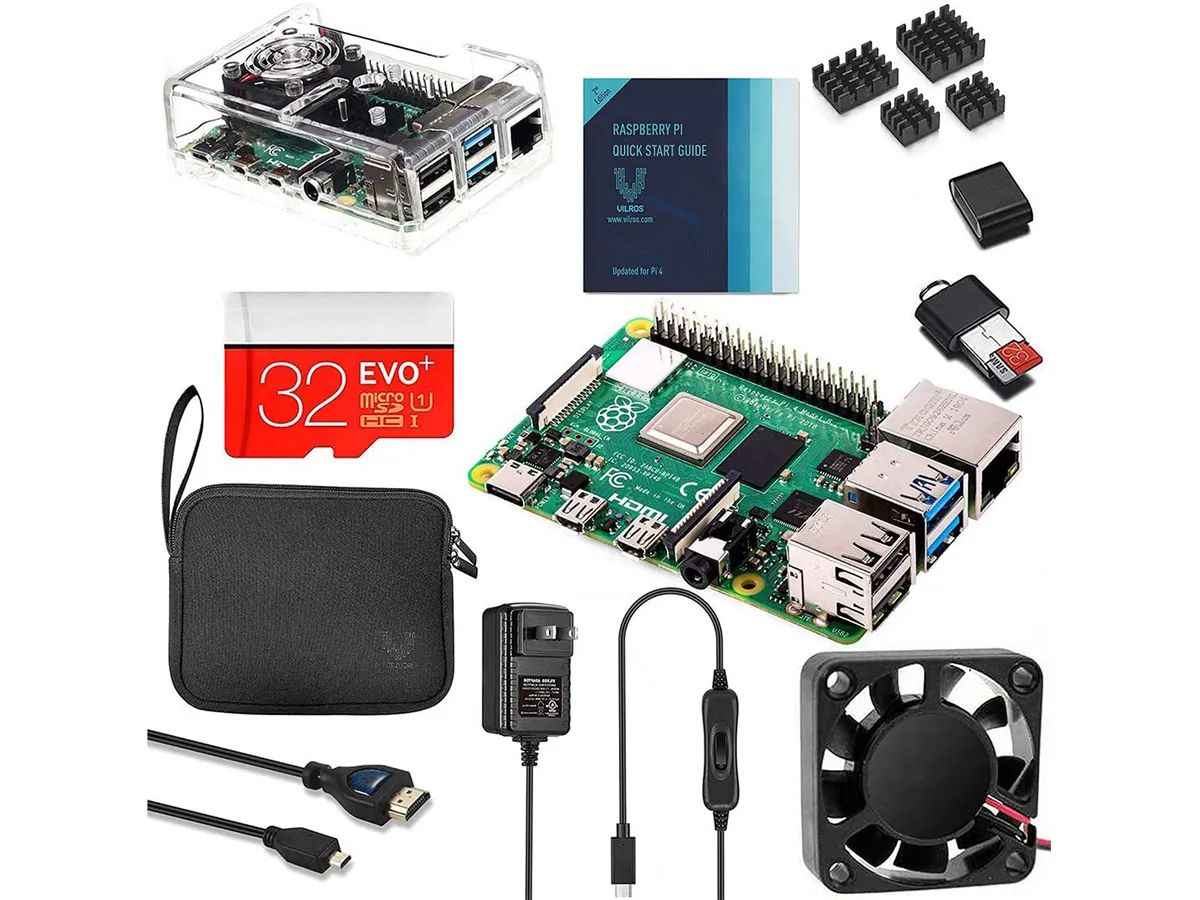Introduction
Welcome to the world of Raspberry Pi! If you’re new to this remarkable tiny computer, you might be wondering about its capabilities and specifications. One important aspect that significantly impacts its performance is the amount of RAM it has. In this article, we will explore the different models of Raspberry Pi and their RAM configurations, as well as discuss why RAM is a crucial factor to consider when choosing the right Raspberry Pi for your projects.
Raspberry Pi is a series of single-board computers developed by the Raspberry Pi Foundation. It is designed to provide an affordable and accessible platform for learning basic computer programming and electronics. Despite its small size, Raspberry Pi boasts impressive capabilities, making it suitable for various projects ranging from home automation and robotics to media centers and retro gaming consoles.
RAM, or Random Access Memory, is an essential component of any computer system, including Raspberry Pi. It is a type of volatile memory that stores data that can be quickly accessed by the CPU. The more RAM a device has, the faster it can perform tasks and multitask without experiencing slowdowns or lag.
Raspberry Pi models come with different RAM configurations, ranging from as little as 256MB to as much as 8GB. The amount of RAM determines how smoothly the system can handle complex applications and data-intensive tasks.
In the following sections, we will dive into the specifics of each Raspberry Pi model and discuss their respective RAM configurations. We will explore the Raspberry Pi Zero, Raspberry Pi 1 Model A+ and B+, Raspberry Pi 2 Model B, Raspberry Pi 3 Model B/B+, and the latest release, the Raspberry Pi 4 Model B. By understanding the RAM capabilities of each model, you will be able to make an informed decision on which Raspberry Pi is best suited for your needs.
What is Raspberry Pi?
Raspberry Pi is a series of single-board computers developed by the Raspberry Pi Foundation. It was first introduced in 2012 and quickly gained popularity due to its affordability, versatility, and educational possibilities. In essence, Raspberry Pi is a credit card-sized computer that can be used for a wide range of projects, from simple DIY electronics to complex programming and robotics.
The primary goal of Raspberry Pi is to provide an accessible platform for learning computer programming and electronics. Its low-cost nature makes it ideal for students, hobbyists, and enthusiasts who want to explore and experiment with technology without breaking the bank. Whether you’re a beginner or an experienced programmer, Raspberry Pi offers countless opportunities to expand your skills and knowledge.
One of the key features of Raspberry Pi is its GPIO (General-Purpose Input/Output) pins, which allow you to connect and interact with various external devices and sensors. This capability makes it perfect for creating home automation systems, robotics projects, IoT (Internet of Things) applications, and much more. You can program the GPIO pins using popular programming languages such as Python and C, enabling you to control and manipulate physical devices in your projects.
Another notable aspect of Raspberry Pi is its wide community support. The Raspberry Pi Foundation has fostered a vibrant and active community of users, developers, and enthusiasts from around the world. This community contributes to the development of the Raspberry Pi ecosystem by sharing projects, tutorials, and troubleshooting tips, making it easier for newcomers to get started and find solutions to their questions and challenges.
In addition to its educational and hobbyist applications, Raspberry Pi has found its way into various professional fields and industries. It is used in manufacturing, automation, research, and even as a component in commercial products. Its compact size, low power consumption, and powerful capabilities make it a compelling choice for embedded systems and specialized applications.
Whether you’re a student, hobbyist, or professional, Raspberry Pi offers a world of possibilities. With its small form factor, affordable price, and extensive community support, Raspberry Pi remains a go-to choice for anyone interested in learning, experimenting, and building creative projects that push the boundaries of technology.
Why does RAM matter?
When considering the performance of a computer system, one of the most crucial factors to take into account is the amount of RAM, or Random Access Memory, it has. RAM plays a significant role in determining how efficiently your device can handle tasks and run applications. Here’s why RAM matters:
1. Multitasking: RAM allows your computer to run multiple programs simultaneously without experiencing a decline in performance. Each program requires a certain amount of memory to operate, and having sufficient RAM ensures smooth multitasking by providing enough resources for each application to run smoothly. Insufficient RAM can lead to slowdowns, lag, and even system crashes when the device runs out of memory.
2. Application Performance: RAM directly affects the speed and responsiveness of your applications. When you launch a program, the data it requires to operate is loaded into RAM for quick access. The more RAM you have, the more data can be stored in memory, reducing the need for frequent data retrieval from slower storage devices like hard drives or SSDs. This results in faster application performance, shorter loading times, and overall smoother user experience.
3. Web Browsing: With the ever-increasing complexity of websites and the use of multimedia elements, web browsers consume a significant amount of memory. RAM allows your device to cache website data, store temporary files, and quickly render web pages. Having ample RAM ensures smooth and responsive web browsing, especially when dealing with multiple browser tabs or running web applications that require significant memory resources.
4. Gaming: Gamers often demand high-performance systems to run modern, graphics-intensive games. RAM plays a vital role in gaming as it stores game assets, textures, and other data required for real-time rendering and smooth gameplay. Insufficient RAM can lead to framerate drops, stutters, and longer loading times, compromising the gaming experience. Having an adequate amount of RAM is essential for an optimal gaming setup.
5. System Stability: Insufficient RAM can cause system instability and crashes, especially when the available memory is exhausted. When your computer runs out of RAM, it starts using disk-based virtual memory, which is significantly slower than physical RAM. This can lead to a decrease in overall system performance and may result in frequent freezing or crashing of applications.
6. Future-Proofing: As technology continues to advance, software applications become more resource-intensive. By having a higher amount of RAM in your system, you can future-proof your device to some extent. Applications and operating systems tend to demand more memory over time, and having extra RAM can ensure your device operates optimally even with the latest software updates.
In summary, RAM is a critical component that directly influences the performance and usability of your computer system. Whether you’re multitasking, running resource-intensive applications, browsing the web, gaming, or ensuring system stability, having an adequate amount of RAM is essential. It allows for smooth operation, faster application performance, and an overall excellent user experience.
Raspberry Pi Models and RAM Configurations
Raspberry Pi models come in various iterations, each with its unique specifications and RAM configurations. Let’s explore the different Raspberry Pi models and their respective RAM capacities:
Raspberry Pi Zero: The Raspberry Pi Zero is the smallest and most affordable model in the Raspberry Pi lineup. It comes with 512MB of RAM, which is sufficient for many lightweight projects and basic computing tasks. Despite its compact size, the Raspberry Pi Zero can handle simple applications and is an excellent choice for those looking for a budget-friendly option.
Raspberry Pi 1 Model A+: The Raspberry Pi 1 Model A+ is another entry-level model in the Raspberry Pi family. It features an upgraded design and a single USB port. It comes with 512MB of RAM, providing a modest performance boost compared to the Raspberry Pi Zero. This model is suitable for basic computing needs or as a platform for learning and experimentation.
Raspberry Pi 1 Model B+: The Raspberry Pi 1 Model B+ is an improvement over its predecessor, offering additional connectivity options and increased power efficiency. It also comes with 512MB of RAM, which allows for smoother multitasking and enhanced performance compared to the Model A+.
Raspberry Pi 2 Model B: The Raspberry Pi 2 Model B represents a significant leap in performance compared to the earlier models. It features a quad-core ARM Cortex-A7 processor and 1GB of RAM, making it capable of handling more demanding tasks and running multiple applications simultaneously. The increased RAM capacity allows for improved performance and a smoother user experience.
Raspberry Pi 3 Model B/B+: The Raspberry Pi 3 Model B and its updated variant, the Model B+, introduced significant improvements over previous models. They feature a faster 1.2GHz quad-core ARM Cortex-A53 processor and 1GB of RAM. The increased processing power and RAM allow for even more robust performance, making them suitable for a wide range of applications, from multimedia streaming to home automation systems.
Raspberry Pi 4 Model B: The Raspberry Pi 4 Model B is the latest and most powerful iteration of the Raspberry Pi series. It boasts impressive improvements, including a faster 1.5GHz quad-core ARM Cortex-A72 processor, support for up to 8GB of RAM, and USB 3.0 ports for faster data transfer. The increased RAM options allow for even more resource-intensive projects and improved multitasking capabilities.
Each Raspberry Pi model offers different RAM configurations to cater to varying needs and project requirements. Consider the complexity of your projects and the resource demands of the applications you intend to run when choosing the right Raspberry Pi model for your needs.
Now that we have explored the different Raspberry Pi models and their RAM configurations, let’s delve deeper into each model to understand their specific features, capabilities, and use cases.
Raspberry Pi Zero
The Raspberry Pi Zero is the smallest and most affordable model in the Raspberry Pi lineup. Despite its diminutive size, this tiny computer packs a punch. With a price tag of only a few dollars, it offers an impressive set of features and capabilities.
The Raspberry Pi Zero is powered by a 1GHz single-core ARM11 processor and is equipped with 512MB of RAM. While it may seem modest compared to the higher-end models, the Raspberry Pi Zero is still capable of running various applications and performing basic computing tasks.
One notable feature of the Raspberry Pi Zero is its size. It measures just 65mm x 30mm x 5mm, making it incredibly compact and suitable for projects with space constraints. Its small form factor makes it ideal for embedding into devices or creating portable setups.
In terms of connectivity, the Raspberry Pi Zero includes a micro-USB port for power, a mini-HDMI port for audio and video output, and a micro-SD card slot for storage. It also features a micro-USB OTG (On-The-Go) port, which allows the device to act as either a USB slave or host, enabling it to connect to various USB devices such as keyboards, mice, and USB storage.
While the Raspberry Pi Zero lacks some of the ports and connectors found on its larger counterparts, it still provides the essential functionalities to create a wide range of projects. It is particularly well-suited for projects that require a low-power, compact solution, such as wearable electronics, miniature game consoles, or IoT devices.
Despite its affordability and compact size, the Raspberry Pi Zero is a capable computer that can run most of the software and operating systems supported by other Raspberry Pi models. While it may not handle resource-intensive tasks as efficiently, it still offers a great platform for learning, experimentation, and building innovative projects on a budget.
Overall, the Raspberry Pi Zero is a remarkable achievement in terms of size, affordability, and versatility. Whether you’re a beginner looking to enter the world of Raspberry Pi or an experienced tinkerer in need of a compact solution, the Raspberry Pi Zero is a compelling choice that provides a wealth of possibilities.
Raspberry Pi 1 Model A+
The Raspberry Pi 1 Model A+ is an entry-level model in the Raspberry Pi family. It is an upgraded version of the original Model A, offering improved features and a more compact design. Despite its modest specifications, the Model A+ is still a capable single-board computer that can be used for a variety of projects.
One significant improvement of the Raspberry Pi 1 Model A+ over its predecessor is its reduced size. It measures only 65mm x 56mm, making it even more compact and suitable for space-constrained projects. Its smaller form factor allows for easier integration into devices and portable setups.
In terms of performance, the Raspberry Pi 1 Model A+ features a 700MHz single-core ARM11 processor and is equipped with 512MB of RAM. While it may not offer the same processing power as later models, it is still capable of running basic computing tasks, light web browsing, and simple applications.
The connectivity options of the Raspberry Pi 1 Model A+ include a micro-USB port for power, a full-size HDMI port for audio and video output, and a micro-SD card slot for storage. It also features a CSI camera connector, allowing you to connect a Raspberry Pi Camera Module for capturing images and videos.
While the Raspberry Pi 1 Model A+ offers a reduced set of ports compared to other models, it still provides the essential functionalities to create a wide range of projects. This makes it suitable for applications such as media centers, home automation systems, and simple IoT devices.
The low power consumption of the Model A+ is another advantage, making it suitable for battery-operated projects or projects that require energy-efficiency. Its compact size and power efficiency make it an excellent choice for portable or embedded solutions where space and power constraints are a concern.
The Raspberry Pi 1 Model A+ is compatible with various operating systems and software libraries supported by other Raspberry Pi models. It can run Linux-based distributions like Raspbian and supports programming languages such as Python, C, and Scratch, making it an accessible platform for learning and experimenting with coding and electronics.
Although the Raspberry Pi 1 Model A+ may not offer the same level of performance as newer models, its affordability, compactness, and compatibility with existing software resources still make it a viable option for many projects. Whether you’re a beginner exploring the world of Raspberry Pi or someone looking for a low-cost solution for your specific needs, the Raspberry Pi 1 Model A+ provides a solid foundation to dive into the world of single-board computing.
Raspberry Pi 1 Model B+
The Raspberry Pi 1 Model B+ is an improvement over its predecessor, the Model B. It offers enhanced features and connectivity options while maintaining the same form factor. With its upgraded specifications, the Model B+ provides a reliable and versatile platform for various projects and applications.
One notable improvement of the Raspberry Pi 1 Model B+ is its increased number of USB ports. It features four USB 2.0 ports, allowing for more peripheral devices to be connected simultaneously. This makes it suitable for projects that require multiple USB devices, such as keyboards, mice, Wi-Fi adapters, and storage drives.
In terms of performance, the Raspberry Pi 1 Model B+ is powered by a 700MHz single-core ARM11 processor and comes with 512MB of RAM. While it may not be as powerful as later models, it is still capable of handling a wide range of tasks, from basic computing to media playback and light gaming.
Connectivity options of the Model B+ include an Ethernet port for wired internet connectivity, two micro-USB ports (one for power and one for USB peripherals), and a full-size HDMI port for audio and video output. It also features a micro-SD card slot for storage expansion and a 3.5mm audio jack for audio output.
The Raspberry Pi 1 Model B+ retains the same GPIO (General-Purpose Input/Output) header found on previous models, allowing for the connection of various external devices and sensors. This makes it suitable for projects involving robotics, home automation, and IoT (Internet of Things) applications.
Despite its improved features, the Model B+ maintains the same form factor as the Raspberry Pi 1 Model B, making it easy to upgrade from the previous model or use existing enclosures and accessories designed for the Model B.
The Raspberry Pi 1 Model B+ is compatible with various operating systems, including Linux-based distributions like Raspbian and third-party platforms like Windows 10 IoT Core. It supports programming languages such as Python, C, and Scratch, providing a versatile and accessible platform for learning and building projects.
While newer Raspberry Pi models offer more powerful specifications, the Raspberry Pi 1 Model B+ remains a suitable choice for a range of projects. Its affordability, improved connectivity options, and compatibility with existing resources make it a reliable and versatile platform for hobbyists, students, and enthusiasts.
Raspberry Pi 2 Model B
The Raspberry Pi 2 Model B is a significant improvement over its predecessors, delivering enhanced performance and expanded capabilities. With its upgraded specifications, the Model B offers a more powerful computing experience, making it suitable for a wide range of applications and projects.
One of the notable features of the Raspberry Pi 2 Model B is its quad-core 900MHz ARM Cortex-A7 processor, providing a substantial performance boost over the previous single-core models. This increased processing power enables faster execution of tasks, improved multitasking capabilities, and smoother overall performance.
In addition to the upgraded processor, the Model B also features an increase in RAM capacity. With 1GB of RAM, it has double the amount of memory compared to previous models. This additional RAM allows for better handling of memory-intensive applications, making it suitable for multimedia tasks, complex software, and more demanding projects.
The Model B retains the same form factor as its predecessors, ensuring compatibility with existing accessories and cases designed for earlier Raspberry Pi models. This allows for easy migration and upgrade paths for users who want to take advantage of the enhanced capabilities offered by the Model B.
Connectivity options on the Raspberry Pi 2 Model B are abundant. It includes four USB 2.0 ports, an Ethernet port for wired networking, a full-size HDMI port for audio and video output, a micro-SD card slot for storage, and a 3.5mm audio jack. These connections provide ample opportunities for connecting peripherals, such as keyboards, mice, external storage, displays, and audio devices.
The Model B includes the standard GPIO (General-Purpose Input/Output) header present in previous Raspberry Pi models, allowing for easy connection to external devices and sensors. This makes it suitable for projects involving robotics, home automation, data logging, and various IoT (Internet of Things) applications.
The Raspberry Pi 2 Model B supports various operating systems, including Linux-based distributions like Raspbian, as well as Windows 10 IoT Core. Programming languages such as Python, C, and Scratch can be utilized to develop applications, making it an accessible platform for both beginners and experienced programmers.
Overall, the Raspberry Pi 2 Model B offers a substantial performance boost compared to its predecessors. With its quad-core processor, increased RAM capacity, and extensive compatibility, it provides a versatile and capable platform for a wide range of projects, from hobbyist tinkering to more advanced applications.
Raspberry Pi 3 Model B/B+
The Raspberry Pi 3 Model B and its updated variant, the Model B+, have revolutionized the Raspberry Pi lineup by introducing significant improvements in performance and connectivity. These models offer enhanced processing power, increased RAM, and expanded connectivity options, making them highly versatile and capable devices for a wide range of projects.
One of the standout features of the Raspberry Pi 3 Model B and B+ is the inclusion of a quad-core 1.2GHz ARM Cortex-A53 processor. This upgrade brings a substantial boost in processing power, enabling smoother multitasking, faster application performance, and improved overall responsiveness compared to previous models.
In addition to the powerful processor, the Raspberry Pi 3 Model B and B+ come with 1GB of RAM. This increased RAM capacity allows for seamless multitasking and improved performance when running memory-intensive applications and complex projects.
Connectivity options on these models are extensive. They feature four USB 2.0 ports, an Ethernet port for wired networking, a full-size HDMI port for audio and video output, a micro-SD card slot for storage, and a combined 3.5mm audio jack for audio output and composite video. Furthermore, both models have built-in Wi-Fi and Bluetooth capabilities, eliminating the need for additional USB dongles.
The Raspberry Pi 3 Model B+ offers some enhancements over the Raspberry Pi 3 Model B. It features a faster Ethernet connection with Gigabit Ethernet over USB 2.0, as well as Power-over-Ethernet (PoE) support through a separate PoE HAT (Hardware Attached on Top).
Both models, the Raspberry Pi 3 Model B and B+, retain the same form factor as their predecessors, allowing for seamless compatibility with existing accessories and enclosures. This makes it easy for users to upgrade to the latest models without the need for additional modifications.
The Raspberry Pi 3 Model B and B+ are compatible with various operating systems and software applications. They support Linux-based distributions like Raspbian, as well as third-party platforms such as Windows 10 IoT Core. The extensive software support and availability of programming languages such as Python, C, and JavaScript make these models accessible to a wide range of users with different programming backgrounds and expertise.
With their enhanced processing power, increased RAM, extensive connectivity options, and compatibility with existing resources, the Raspberry Pi 3 Model B and B+ provide capable and versatile platforms for a wide range of projects. Whether you’re building a media center, creating a home automation system, or exploring IoT applications, these models offer the flexibility and performance needed to bring your ideas to life.
Raspberry Pi 4 Model B
The Raspberry Pi 4 Model B is the latest and most powerful iteration of the Raspberry Pi series. It introduces significant improvements over its predecessors, delivering enhanced performance, increased RAM options, and a wide range of connectivity features. With its advanced specifications, the Model B offers a versatile and capable platform for a variety of projects and applications.
One of the standout features of the Raspberry Pi 4 Model B is its upgraded processing power. It is equipped with a 1.5GHz quad-core ARM Cortex-A72 processor, offering a significant performance boost compared to earlier models. This enables faster execution of tasks, improved multitasking capabilities, and seamless handling of resource-intensive applications.
In terms of RAM options, the Raspberry Pi 4 Model B provides even more flexibility. It is available in different configurations, ranging from 2GB to 8GB of LPDDR4 SDRAM. These increased RAM capacities allow for smoother multitasking, better performance in memory-intensive applications, and improved responsiveness under heavy workloads.
The connectivity options on the Model B are extensive. It features two USB 3.0 ports for faster data transfer, two USB 2.0 ports, dual micro-HDMI ports for dual 4K display support, a Gigabit Ethernet port for high-speed wired networking, and a full-size HDMI port for audio and video output. It also includes a micro-SD card slot for storage expansion and two CSI camera connectors for connecting Raspberry Pi Camera Modules.
The Raspberry Pi 4 Model B retains the standard GPIO (General-Purpose Input/Output) header, which allows for easy connection to a wide range of external devices and sensors. This makes it suitable for projects involving robotics, home automation, sensor monitoring, and various IoT (Internet of Things) applications.
With its advanced specifications, the Raspberry Pi 4 Model B is capable of running a variety of operating systems, including Linux-based distributions like Raspbian and third-party platforms. It supports popular programming languages such as Python, C, and JavaScript, providing a versatile platform for both beginners and experienced developers.
While the Raspberry Pi 4 Model B offers significant performance improvements, it is still compatible with existing accessories and cases designed for previous Raspberry Pi models. This allows for easy migration and compatibility with the extensive ecosystem of Raspberry Pi resources.
With its powerful processing capabilities, increased RAM options, and extensive connectivity features, the Raspberry Pi 4 Model B provides an exceptional platform for a wide range of projects. Whether you’re building a media center, developing IoT solutions, or creating a high-performance workstation, the Model B is capable of handling demanding tasks and delivering impressive results.
Choosing the Right Raspberry Pi Based on RAM
When selecting a Raspberry Pi model, one of the crucial factors to consider is the amount of RAM (Random Access Memory) it offers. The RAM capacity directly affects the device’s performance, multitasking capabilities, and its ability to handle resource-intensive applications. Here are some considerations to help you choose the right Raspberry Pi based on RAM:
1. Basic Computing: If you’re looking to use your Raspberry Pi for basic computing tasks like web browsing, document editing, or simple programming, models with 1GB of RAM, such as the Raspberry Pi 1 Model B+, should suffice. These models provide enough memory to run lightweight applications smoothly.
2. Multimedia and Gaming: For multimedia applications like media centers or gaming consoles, models with 2GB or 4GB of RAM, such as the Raspberry Pi 4 Model B, are recommended. These models offer enhanced performance, smoother playback, and the ability to handle more resource-intensive games and multimedia software.
3. IoT and Home Automation: If you plan to use your Raspberry Pi for IoT projects or home automation systems, models with 1GB or 2GB of RAM should be sufficient. These models provide enough memory to run sensor monitoring applications, manage connected devices, and process data efficiently.
4. Advanced Projects: For more advanced projects involving AI (Artificial Intelligence), machine learning, or complex software development, models with higher RAM capacities, such as the Raspberry Pi 4 Model B with 4GB or 8GB of RAM, are recommended. The increased memory allows for faster data processing, efficient multitasking, and seamless handling of memory-intensive tasks.
5. Future-Proofing: If you’re unsure of your exact project requirements or want to ensure longevity and compatibility with future software updates, it’s advisable to choose a model with higher RAM options. The Raspberry Pi 4 Model B with 4GB or 8GB of RAM offers more flexibility and future-proofing, as software and applications tend to become more memory-intensive over time.
Ultimately, the choice of Raspberry Pi model based on RAM depends on your specific project requirements and budget. Smaller projects with basic computing needs may benefit from models with lower RAM capacities, while more demanding projects require models with higher RAM configurations.
Consider the types of applications you plan to run, the level of performance required, and the potential scalability of your project when selecting the right Raspberry Pi based on RAM. Assessing these factors will help ensure that your Raspberry Pi can handle your intended tasks and remain capable of meeting your project goals.
RAM Usage in Raspberry Pi Projects
The RAM (Random Access Memory) capacity of a Raspberry Pi plays a crucial role in determining its performance and capability to handle various projects. Understanding how RAM is utilized in different types of projects can help you optimize your resources and choose the right model for your specific needs. Here are some considerations regarding RAM usage in Raspberry Pi projects:
1. Lightweight Projects: For simple projects that involve basic computing tasks, such as running a web server or a simple home automation system, models with lower RAM capacities, like the Raspberry Pi Zero or Raspberry Pi 1 models with 512MB of RAM, are often sufficient. These projects typically require minimal memory resources, allowing you to allocate more RAM to other aspects of your system, such as buffering data or running background services.
2. Multimedia Applications: When working with media centers, video streaming, or image processing projects, models with higher RAM capacities, such as the Raspberry Pi 3 Model B/B+ or the Raspberry Pi 4 Model B with 2GB or 4GB of RAM, are recommended. These projects often involve handling and manipulating large files and require sufficient memory to ensure smooth playback and efficient processing.
3. IoT and Sensor Monitoring: Internet of Things (IoT) projects and applications involving sensor monitoring can benefit from models with moderate RAM capacities, like the Raspberry Pi 3 Model B/B+. These projects often involve collecting and processing data from various sensors and devices. Sufficient RAM allows for efficient data handling and real-time processing, ensuring smooth operation and responsiveness in your IoT applications.
4. AI and Machine Learning: Advanced projects involving AI (Artificial Intelligence), machine learning, or complex data analysis require models with higher RAM capacities, such as the Raspberry Pi 4 Model B with 4GB or 8GB of RAM. These projects involve working with large datasets and performing intensive calculations. Ample RAM is necessary for storing and manipulating data efficiently, enabling faster processing and accurate analysis.
5. Multitasking and Future Scalability: Projects that require multitasking or have the potential for future expansion should consider models with higher RAM capacities. More RAM allows for smoother multitasking, accommodating multiple concurrent processes without impacting performance. Additionally, projects that may require the incorporation of new features or software updates can benefit from models with higher RAM options, ensuring future scalability and compatibility.
It’s important to note that optimizing RAM usage is also dependent on efficient system management, such as managing background processes, closing unused applications, and optimizing code to minimize memory usage. Proper utilization of swap space and external storage options, such as USB drives or network-attached storage, can also help alleviate memory constraints and enhance overall performance.
By considering the RAM requirements of your specific project and selecting the appropriate Raspberry Pi model, as well as implementing effective memory management techniques, you can ensure optimal performance and seamless execution of your Raspberry Pi projects.
Conclusion
Choosing the right Raspberry Pi model based on RAM capacity is essential for achieving optimal performance and ensuring compatibility with your project’s requirements. The amount of RAM directly affects the device’s multitasking capabilities, application performance, and ability to handle resource-intensive tasks.
The Raspberry Pi lineup offers a range of models with varying RAM capacities, from the Raspberry Pi Zero with 512MB to the Raspberry Pi 4 Model B with options of up to 8GB. Understanding the RAM requirements of your projects can help you select the most suitable model that aligns with your needs and budget.
For basic computing tasks and lightweight projects, models with lower RAM capacities can provide adequate performance. The Raspberry Pi Zero and Raspberry Pi 1 models are ideal choices in such scenarios.
If you’re working on multimedia applications, IoT projects, or more demanding tasks requiring efficient multitasking, models with higher RAM capacities like the Raspberry Pi 3 Model B/B+ or the Raspberry Pi 4 Model B should be considered. These models offer increased processing power and memory resources to handle complex applications more smoothly.
Remember that RAM usage varies depending on the nature of your projects. Lightweight projects may require minimal memory resources, while AI, machine learning, or data-intensive projects demand higher RAM. Optimizing RAM usage through proper system management techniques, such as closing unused applications and optimizing code structure, can further enhance overall performance.
The Raspberry Pi ecosystem continues to evolve, with newer models offering more powerful specifications and increased RAM options. By selecting a model that meets your project requirements and considering future scalability, you can ensure that your Raspberry Pi remains capable of supporting your growing needs.
Ultimately, choosing the right Raspberry Pi based on RAM capacity requires careful consideration of the specific demands of your projects. By analyzing your project requirements and aligning them with the available models, you can make an informed decision that ultimately leads to a successful, performance-driven Raspberry Pi project.







